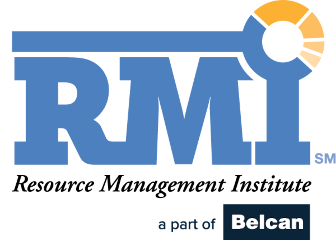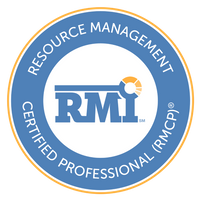The common approach of acquiring and adopting new technology — conducting an exhaustive evaluation process that drags on for months and often costs more money than the technology itself; paralyzes organizations. The status quo becomes “good enough,” and technology investments go on the back burner. It’s a short-term decision that hurts long-term growth. It’s also an unnecessary one.
Over the last fifteen years, cloud computing has restructured the entire industry of software development and software architecture enabling companies to accelerate digital transformation initiatives at a fraction of the cost of previous technology eras. Cloud-based applications like Salesforce, ServiceNow, and Workday have streamlined business processes, facilitated collaboration, and improved workforce productivity. Gartner estimates that by 2025, over 95% of new digital workloads will be deployed on cloud-native platforms, up from 30% in 2021.
More recently, the introduction of the multi-tenant cloud architecture model — where multiple instances of an application operate in a shared environment — means no more perpetual licenses or long-term contracts and enables software developers to push new features continuously and automatically to users without requiring effort on the users’ part to manage upgrades. And things are getting even better, further lowering acquisition costs: Gartner predicts that by 2025, 70% of new applications developed by organizations will use low-code or no-code technologies, up from less than 25% in 2020.
For example, Salesforce recently launched the public beta for Code Builder, its new web-based integrated development environment (IDE) hosted on AWS. Users don’t need to install or configure any development tools; they launch Code Builder in their web browsers and can start coding.
The advancements in simplifying the development and delivery of software at much lower price points, now allows access to the best technology. This is also fueling the development of Vertical Software as a Service (SaaS) solutions that are purpose-built for specific industries. For example, Internet Pipeline Inc. offers a customer relationship management (CRM) platform exclusively for the insurance industry. Kenandy Inc.’s designed its enterprise resource planning (ERP) specifically for manufacturing companies’ workflows.
Because a vertical SaaS developer’s target customer base is typically smaller than horizontal solutions like CRM, the ability to deliver applications via the multi-tenant model is a critical cost-saver because it brings infrastructure costs down by an order of magnitude. This has lowered the barrier to entry for software development, from bootstrapped startups to the largest multinationals, to create solutions purpose-built to solve use cases in specific industries. For many CIOs, that use case is improving Customer Experience (CX).
Analyst reports such as ESG’s 2022 Technology Spending Intentions Survey, IDC’s 21st annual State of the CIO Report, and the EY-Parthenon Digital Investment Index discussed CIO’s budget priorities. Again and again, CIOs listed improving CX as one of their top priorities.
As companies implement technology to improve CX, they must also invest in technology to support their most essential CX assets: their people. According to Forrester Research, organizations must take a more people-centric view of growing their businesses by embarking on a “human-centered tech transformation” to improve productivity and collaboration among employees and independent contractors while reducing turnover.
“Leading firms will unlock the creativity of their employees by using intelligent technologies like automation and prediction engines that focus on outcomes, not just financial results. This shift will establish a new era of transformation, one comprising human-centered tech initiatives that form a tight link between CX (customer experience) and EX (employee experience), drive competitive advantage, and deliver a 3% to 5% net gain in productivity.”
Even in today’s age of AI-powered chatbots and other cutting-edge automation technologies, a company’s employees remain its most important customer-facing resource. That’s especially true in the professional services industry, a broad category that includes creative agencies, IT services firms, management consultancies, architecture and engineering firms, and the embedded services divisions of products companies.
Professional services organizations (PSOs) don’t manufacture, distribute, or sell goods, the expertise and creative outputs of their employees are their “products.” Providing an excellent CX is the difference between satisfied and dissatisfied (and soon to be former) clients.
PSOs have long modeled their approaches to staffing client and project teams on the ‘pyramid’ template the largest players like PWC, Deloitte, Accenture, and KPMG established decades ago: keep hiring more and more people as full-time employees (FTEs) to train and advance up the ranks. In today’s environment expanding the firm’s capabilities is done by acquiring a smaller company and onboarding its employees into the FTE fold.
The new Workforce Ecosystem is challenging that model. People don’t want to just be assigned work, based on their availability and current skill sets. They want to work on projects, and with clients, they find interesting and rewarding. They also want more control over how they advance their careers.
Our recent survey of more than 1,500 services professionals reveals that more employees are taking these matters into their own hands. Among the topline findings:
Not surprisingly, a majority (61%) of PSO senior executives spend 40% of their time each day dealing with employee turnover and over half (53%) have a problem hiring FTEs. They’re unable to effectively address the wants and needs of their workforces, mired in exporting data to spreadsheets and using legacy software like general purpose ERP or CRM systems and legacy professional services automation (PSA) systems that were not designed for the kinds of engagements PSOs run.
Solving these problems has fueled the growth of vertical SaaS developers building software solutions purpose-built to provide everything that a PSO needs to run optimally to consistently deliver exceptional outcomes for their clients.
Ten years ago, developing software expressly for industries like professional services, manufacturing, or financial services would have created many fewer innovations because of the high cost of development. For businesses, software development, delivery, and maintenance costs would have remained high. Fortunately the rapid and ongoing digitalization of technology continues to transform the software industry. Developers are creating solutions, purpose-built for specific industry use cases, that provide businesses with a competitive edge, greater efficiencies and ultimately more success.

Ray is a practitioner of applying technology to business with the goal of democratizing human potential and building ecosystems that will spark reformational outcomes, because today, business is borderless and a level playing field is necessary to ensure success for both talent and organizations. This has been the lens that Ray has looked through for decades and it is why he has helped orchestrate a path for Kantata that focuses exclusively on serving the Professional Services Industry with technology and expertise that puts people first – celebrating the individual and championing the rise of the multi-affiliated workforce.




